 |
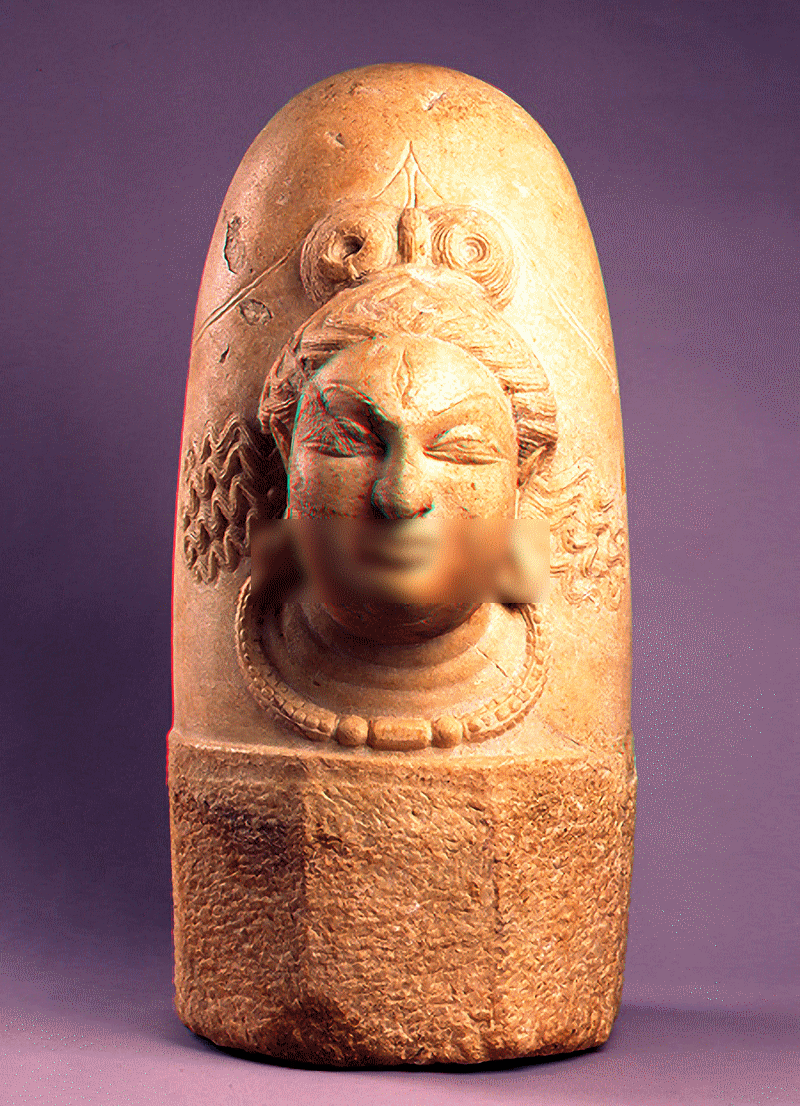 |
|
The linga (phallic emblem of Shiva) symbolizes the great generative force of the universe. It is usually the most sacred object in a temple dedicated to Shiva and is housed in the main sanctum. When plain (simply phallic), the linga represents Shiva in his most abstract form. In this example, Shiva's face has emerged from the central shaft. He is adorned with earrings and a necklace and his hair is worn in a double bun with a crescent moon on one of the buns.
This sculpture was made during the short-lived Shahi kingdom (seventh-ninth century) of eastern Afghanistan, which produced a small number of extraordinary sculptures. They were carved in a distinctive white marble and their style derived from sculptural traditions of northern India and Kashmir. (Source: Metropolitan Museum New York) |
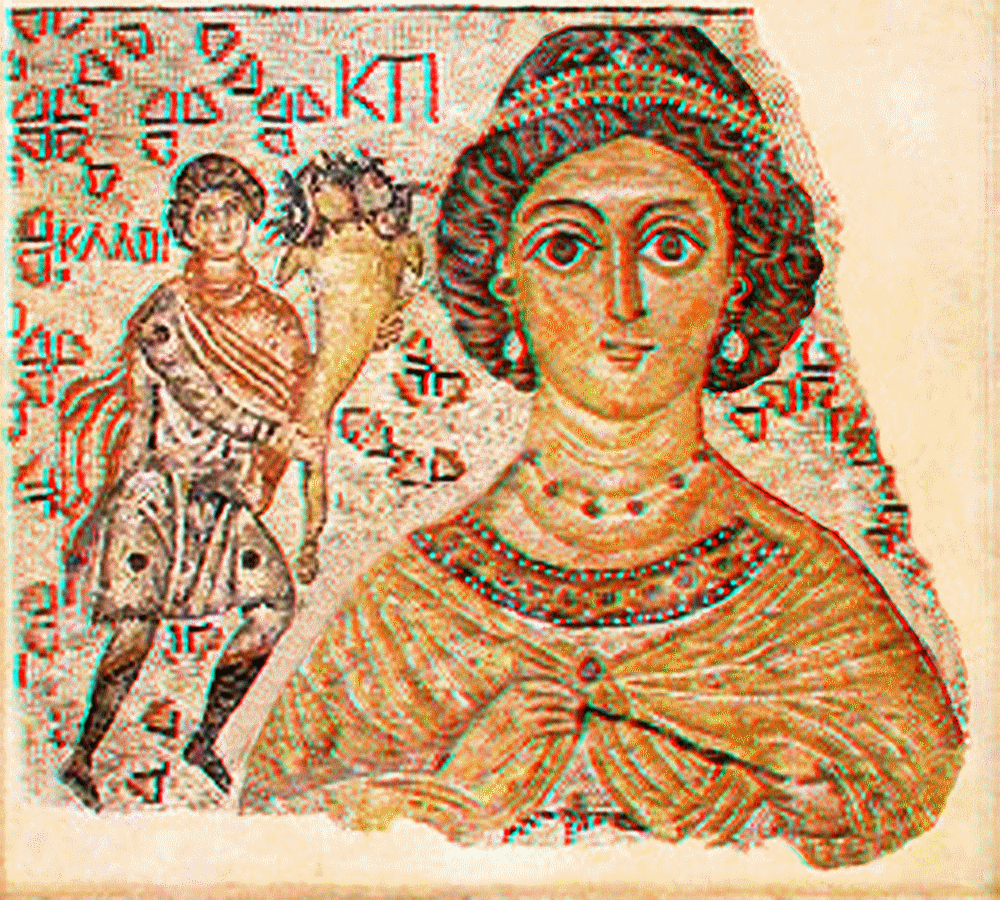 |
Fragment of a Floor Mosaic with a Personification of Ktisis, 500–550,
Byzantine
Marble and glass (Source: Metropolitan Museum New York)
|
 |
Relief plaque of a cobra on a neb basket, Late Period–Ptolemaic Period, 400–30 B.C.
Egyptian
Small Late Period and Ptolemaic reliefs or sculptures that depict a subject in a partial or unfinished way but are themselves finished objects constitute a special class of object. Guidelines like those for artists are often prominently exhibited as part of the object, although, in fact, many instances can be noted where the object simply could not serve as a suitable model for a traditional formal Egyptian representation. Personifications of kingship, figures that may represent the now emerging demigods Imhotep and Amenhotep, son of Hapu, and popular gods like Harpokrates or Isis, are heavily represented within the corpus. Limestone.
(Source: Metropolitan Museum New York) <
|
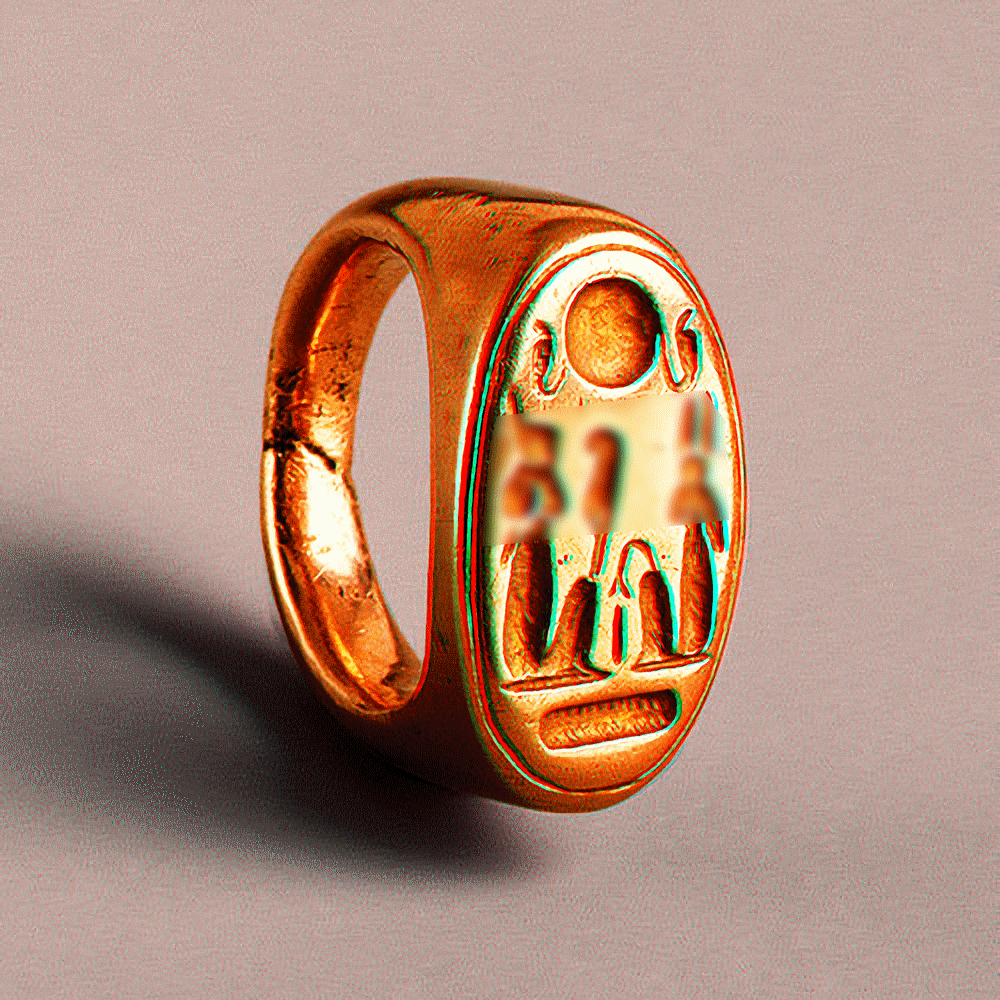 |
Finger ring of King Akhenaten and Queen Nefertiti, New Kingdom, Amarna Period, Dynasty 18, reign of Akhenaten, ca. 1353–1336 B.C.
Egyptian; from Middle Egypt, el-Amarna (Akhetaten), inc. el-Hagg Qandil, Town, Petrie 1891–92
Gold. The hieroglyphs of this ring found at Amarna may be read as an ideogram. The two seated figures are probably Akhenaten (left) and Nefertiti (right), represented as the deities Shu (air, as indicated by the feather he holds) and Tefnut (moisture). They were father and mother of the earth and sky, which are symbolized by the earth hieroglyph below and the sun disk flanked by two sacred cobras above. (Source: Metropolitan Museum New York) |
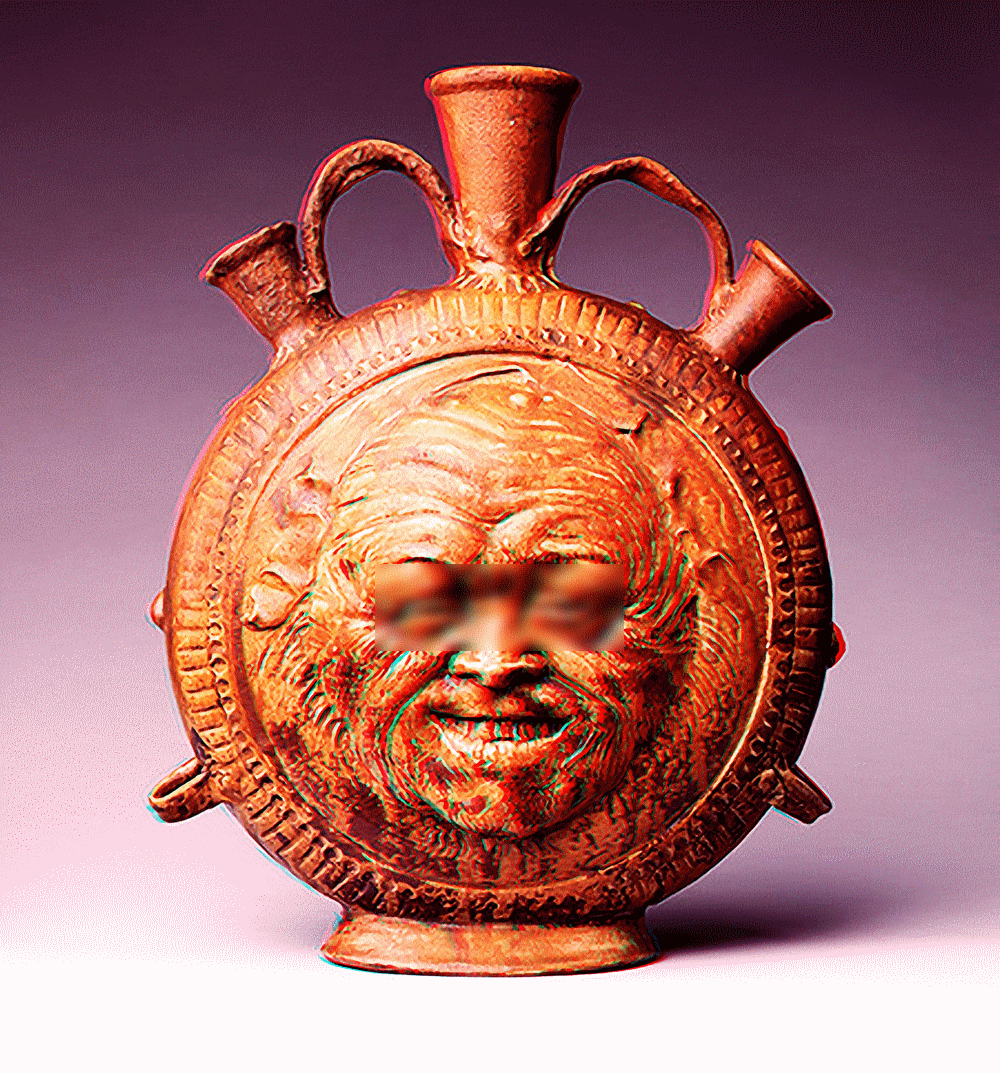 |
Flask with face, ca. 1890.
Jean-Joseph Carriès (French, 1855–1894).
Glazed stone.
The grimacing face reveals the artist's gifts as a sculptor—his profession before becoming a ceramicist. Carriès made an important series of masks, inspired by Japanese Noh theater and the gargoyles and carved faces on Gothic church architecture. His stoneware flasks with faces are an offshoot of this production. The bearded face as a motif on a water jug has its origins in sixteenth- and seventeenth-century German stoneware vessels known as Beardman or Bellarmine jugs.
(Source: Metropolitan Museum New York) |
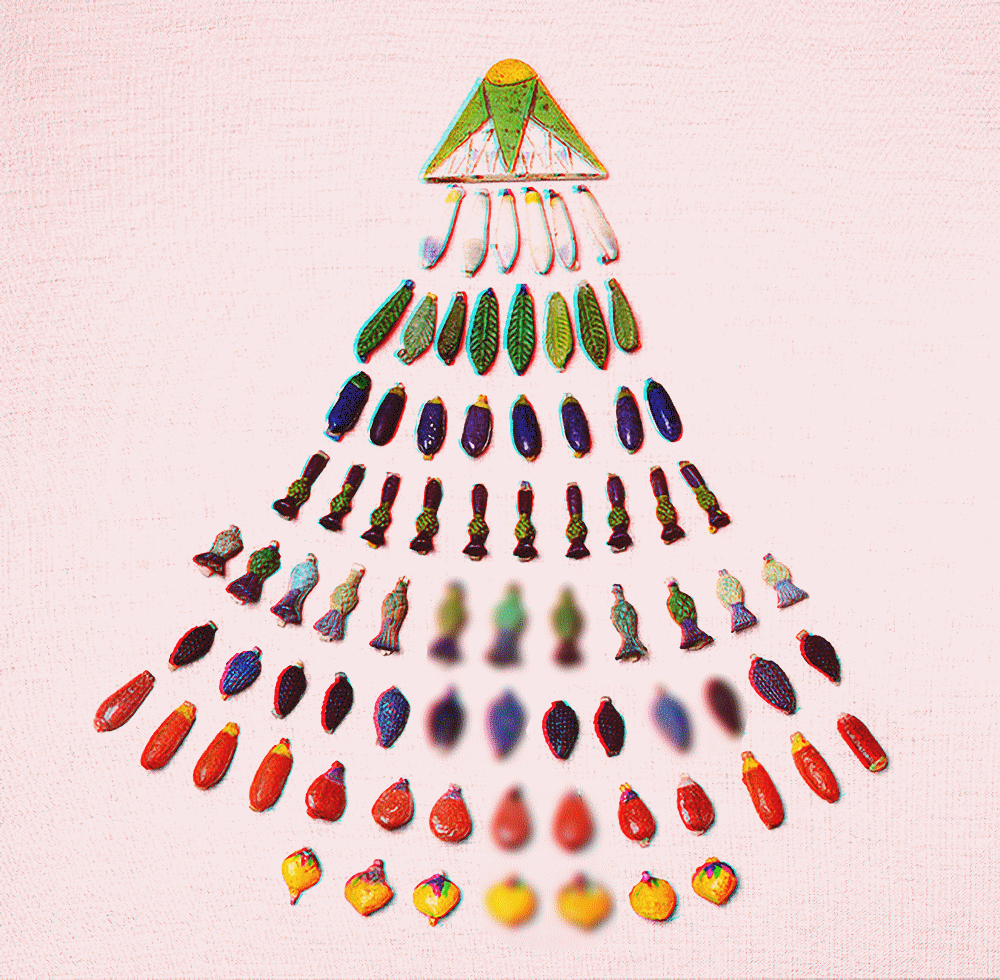 |
Jewelry elements for a broad collar, New Kingdom, Amarna Period, Dynasty 18, reign of Akhenaten, ca. 1353–1336 B.C.
These faience necklace elements were excavated at Amarna. The beads include palm fronds (green), lotus petals (white), dates (green, blue, and red), bunches of grapes (dark blue), cornflowers (green, blue, and white), persea fruit (yellow), and dom-palm fruit (red). The individual beads were made in molds and small ring beads were attached later to allow stringing. These elements were intended for a collar necklace, so rings were attached at top and bottom so that the beads could interlock two strings. The triangular necklace terminal in the shape of a lotus blossom was pierced with holes for the necklace threads before it was fired.
These jewelry elements come from houses in the North Suburb of Amarna where there were sites with a high density of faience molds and pendants, suggesting production took place in those areas. (Source) |
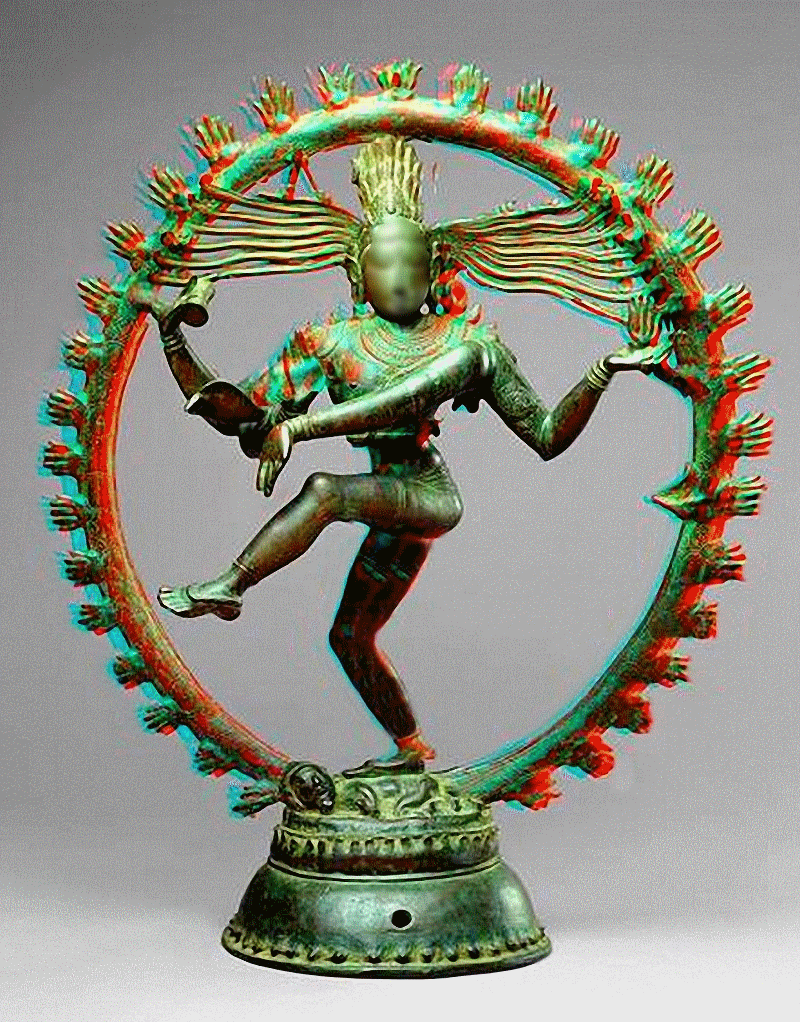 |
Shiva as Lord of Dance (Nataraja), Chola period (ca. 860–1279), ca. 11th century.
Tamil Nadu, India.
If a single icon had to be chosen to represent the extraordinarily rich and complex cultural heritage of India, the Shiva Nataraja might well be the most remunerative candidate. It is such a brilliant iconographic invention that it comes as close to being a summation of the genius of the Indian people as any single icon can. Sculptures of Shiva dancing survive from at least as early as the fifth century, but it was under the rule of the great Chola dynasty of southern India (ca. 860–1279) that the world-famous iconographic type evolved. (Source: Metropolitan Museum New York) |
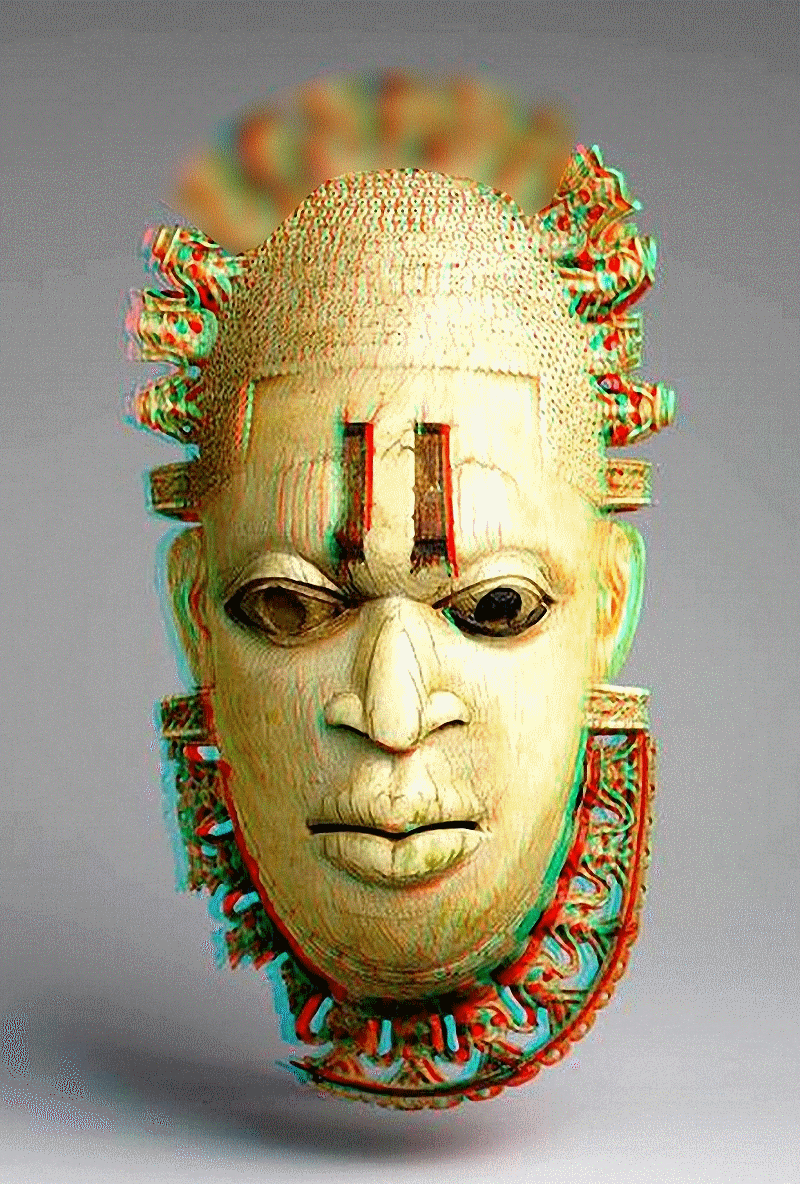 |
Queen Mother Pendant Mask: Iyoba, 16th century. Nigeria; Edo peoples, court of Benin. The Michael C. Rockefeller Memorial Collection, Gift of Nelson A. Rockefeller, 1972. MET Museum. Among the most celebrated masterpieces of African art, this pendant is at once a prestige object worn by the king on ceremonial occasions and the portrait of an important historical figure at the court of Benin. The preciousness of the material and the refinement of the carving indicate that it was created by the exclusive guild of royal ivory carvers for the king. (Source: Metropolitan Museum New York) |
